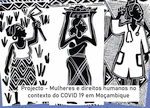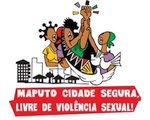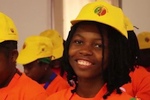Access to and Exercise of Political Power by Women
Conceição Osório
Published in Outras Vozes no. 21, November 2007
In the current context, as we get ever closer to the elections for Provincial Assemblies, I would like to re-examine WLSA’s study on the participation of women in the Legislative Elections of 2004, especially in what concerns the access to and exercise of political power by women. Based on that, I will also attempt to discuss the results of works on political participation of women that we have been carrying out since the 1990s.
First, it is important to consider the Mozambican context, with respect to democracy-related questions and to social and political factors that can explain some of the singularities found. It is quite useful to recall, briefly, three aspects that I believe shape Mozambican reality, particularly in what relates to women.
The first aspect is the fact that the country has lived through three wars and three systems in the last 40 years, what naturally had implications for people’s lives. First, the colonial period (and the colonial war), based its strategies of domination on a framework that protected traditional structures. Concretely, I am referring to the social roles and functions of women and to the family organisation that supported it. If, in the colonial context, neither men nor women where rights bearing subjects, from a social and legal point of view women were invisible (legally the situation was the same for women of the colonizer group).
The second aspect is that when the country became independent in 1975, a one-party system is put in place. If, on the one hand, it extends citizenship rights to all (male and female), on the other hand it imposes a uniform model of access and exercise of rights. This meant that the break with colonial domination took place through the imposition of patterns of behaviour based on a conception of a totalitarian state. Regarding rights and duties as well as expectations, the equality of human beings was conceived within a model that denied those same human beings the possibility of choice.
For women, the principle of formal equality led to a massive increase in the access to education, literacy and employment. This period (from 1975 to the mid 80s) is characterized by a determined effort to achieve equality. However, the nature of women’s emancipation (how far could the demands of women go?) was confined by an ideology that denied (both men and women) the opportunity for diversity. Emanating from the Marxist-Leninist logic that the “end” of the mechanisms of exploitation of man by his fellow man would lead to a more just and equal society, the system did not challenge (it actually legitimised) the social roles and functions of women.
Such a situation resulted in the co-existence of a discourse that reinforced the maternal and educational function of women, with a formal equality between men and women. This means that women should be literate, employed, have equal salary, but should be, above all, mothers and spouses. This is what the State’s political leadership expressed and emphasized when it fought the use of tight pants, prohibited public displays of tenderness between people and directed attention to moralizing values. This all meant that in the first fifteen years of independence the struggle for the emancipation of women was a component of the broader struggle for emancipation of the people. For the system and for society, the emancipated woman was (and still is), the one who produces and feeds the combatants (Anthem of the Organisation of Mozambican Women). The mechanisms that, as Bourdieu asserts, give substance to the habitus and define identities could not be questioned.
In the 80s, with the intensification of the war and the lack of political control it generated, especially on family structure, to which the worsening economic situation must be added, the State tried to maintain an order that was seemingly escaping it. Examples of this are the revival of appeals to respect traditional culture, and to respect the established and “natural” power. Therefore, if, on the one hand, the public discourse of equality continues, on the other hand there is an attempt to control the situations that can create breaches in the established order (divorced women, living alone).
A third aspect to consider is the creation of new possibilities for a more plural expression of the struggle of women for emancipation, after changes in the political system that occurred in the early 1990s (new Constitution and respect for individual freedom), but mainly with the growth of civic intervention (especially through the creation of NGOs). This is the reason why an increasing number of women have filled in decision making positions in both the civil service and political power, particularly in the political parties, Parliament and government.
Research has shown, however, that the newly gained plurality in political intervention, in Parliament, for instance, has not produced a feminine discourse that questions the democratic need to alter social gender relations. As a matter of fact, women members of Parliament have not, so far, introduced legal initiatives in defence of women’s rights. This means that the presence of more women in positions of power (almost 40% in Parliament) has not prevented that the model of political intervention remains androcratic. Just as an example, the participation of women in the election processes has been limited mainly to mobilization and vote gathering.
It is clear that if democracy is indispensable, by itself it is not enough to eliminate the structure of gender inequality. For example, as we shall see later, the documents of many political parties define the struggle for political and civil equality in the public sphere as a programmatic principle, but at the same time defend and fight for the traditional structure and hierarchy within the family that configures women as dependent and inferior.
It is necessary therefore, we believe, to reflect on the social model that configures identities, independently from systems of political organisation. In other words, it is essential to consider how cultural factors are involved in the construction of social relations that legitimise power and make it “flow” as a function of gender.
The 2004 Legislative Elections
Not wanting to repeat what has been discussed before (see article “The case of the 2004 Legislative Elections in Mozambique. A gender analysis”, translation published in the supplement of Outras Vozes 13, November 2005), let’s review the central aspects of the research carried out in 2004. First of all, we wanted to know how political parties conceive women’s participation, in other words, what is the real significance, for parties, of including women in political life. For that purpose, we analysed programs, bylaws and electoral manifestos of parties. We paid special attention to the process of selection of candidates (both men and women) and to the level of input of women’s organisations in the make up of candidates’ lists. Secondly, we wanted to know how men and women characterize women’s political participation, that is, how they see the political intervention of women.
Brief theoretical assumptions
In our work we basically articulated three concepts. First, we used the concept of democracy in the sense used by Touraine (1996), as a system at the service of human beings as subjects that create their individual and collective life. That means that democracy implies a perspective that, not being exclusively social, is not individual either, in the sense of free will, being open to the inclusion, formation and representation of interests of new social actors. Therefore, to study power it is not enough to identify a system as democratic in the positivist sense, but it is necessary to try and reveal what Touraine considers as that which structures democracy: the relationship between the social and the individual, in other words, the characteristic that “democracy has to serve human beings as subjects” (1966: 33). In this sense, democracy was analysed for the possibilities it creates for the inclusion of women. From a gender perspective we were more interested in understanding how the organisations and structures integrate different interests and groups than, unlike what functionalists propose, in identifying the presence of indicators of political democracy.
On the other hand, on studying new social actors such as women, we had to take into consideration the socialisation mechanisms that shape the quality and nature of political participation, using variables as gender and age. This question refers back to the assumption that considers the family as a political field, that is, as a producer of power, that influences (and is influenced by) the democratic system.
This approach is the more significant and important as it is known that the origin of the democratic system is based on the exclusion of women from political action. Thus, the democratic system not only coexists with an androcratic model but bases its reproduction on it. This means that democracy refers to the public space and, as such, is a concept that is not operative in the analysis of the family because it leaves aside elements that are central to the understanding of the constraints that exist to the access to and exercise of power by women.
For us, democracy should be articulated with human rights. Up to now, the history of democracy is a history that stresses political and civil rights. The question is about the need to shift the analysis of the legal system and political regime to the way the cultural model interferes in the production of rights, or how access to and exercise of political rights in the democratic system can be constrained by cultural factors (access to school, decision on family planning, etc.).
The concept of democracy is connected with another fundamental analytical instrument: power. This is the second big concept we worked with. For us, power is understood in the way it is developed by Foucault, in terms of action over action. Used this way, power has the meaning of a network of conflicts and negotiations, mediated and expressed by the control of resources, both material and symbolic (1996).
Finally, we worked with the concept of gender, which, as specialists in this area know, sends us back to a way of looking at and studying reality, since gender is an analytical tool of socio-cultural analysis. Gender is a category, not in the sense of a universal and dogmatic statement, but, as suggested by its Greek etymology, in the sense of debate, search and analysis of how social relations are structured.
The documents of the parties
Going directly to the results of the research, we will mention only two aspects: one, the analysis of the documents and the other, the representations about the access to and exercise of power by women.
In the analysis of the documents, our concern was to recognize the existence, or not, of a gender perspective in the contents of the programs, bylaws and electoral manifestos of political parties and the connection between these programmatic documents and the programs and strategies of the women’s organisations of the parties.
In brief, I will say that there is no coherence between the documents guiding the activity of those parties and their respective women’s organisations in any of the parties studied. Due to lack of time, I am going to mention two parties as examples: Frelimo and RENAMO. Frelimo was selected because it is the party in power and the one that since the armed struggle has claimed for itself the struggle for women’s rights. RENAMO was chosen because it is the biggest opposition party, being one of the parties to the civil war and having a strong social base in rural areas.
So, what do the documents of these two parties say about the political participation of women?
In its program, Frelimo defines equality between men and women before the law as a principle, not just in its formal aspect but also in terms of exercising it. Its program is based on, and I quote, “the struggle against domestic violence and on the promotion of the participation of women in organs of political decision and on the defence of strategies that guarantee the equality of opportunities and access to all areas of political, social, economic and cultural life”. These intentions are, in what concerns the composition of party bodies, expressed by the definition of quotas (Frelimo Program, no date).
In relation to the party bylaws, its intentions, as stated in the Program, are coherent with the functioning and composition of the decision-making bodies such as the Political Commission, the permanent leadership body of the party, where women make up 50% of the members.
However, if we look at the documents that contain the strategies of the party’s women’s organisation, we realize that they do not go as far as what is defined in the guiding documents of the party. For instance, while the party stresses the principles of equality, its women’s organisation holds to very conservative notions about the role of women, here seen as mothers, wives and educators, with an emphasis on the notion of complementarity.
And why is that so? The causes of this situation can be found in the history of the women’s organisation of Frelimo. Initially, it was created to serve as logistic support to the armed struggle fighters, and its fighting value was limited to a rear-guard without intervening in political decision-making. The organisation insured that products reached the fighters, it educated children and cared for the wounded. After independence, an emancipation discourse arises that, as we have already seen, expresses the equality of rights in the public space, but continued to be based on the specificity of the “feminine essence”. On the other hand, the fact that others organisations, such as NGOs, were later created, where women could intervene without party bonds, further accentuated the conservative nature of the party’s women’s organisation.
Speaking now about the RENAMO party, participation of women is assured by its women’s organisation, which analyses the role of women as (and I quote): “support of the guerrillas” and as mothers, intending to bring back “the cultural principles that have always characterized the big Mozambican family” (2001:1).
Unlike Frelimo’s, Renamo’s central program makes only brief and sporadic references to the equality between men and women, while documents from its political commission mention profusely the defence of traditional values and culture, defining the gender question as: “speaking of gender is like speaking about a compromise with the mother, daughter, wife and sisters (…) in the fight against poverty”.
It is rather curious that Renamo, that justified the war it started as a struggle for the introduction of a democratic system in the country is, in what concerns the rights of women, profoundly anti-democratic.
But what I found interesting is that, although the philosophy of both parties on the participation of women in politics is different, two common facts are prominent in them: first, is the absence of a clear statement of the importance of the political participation of women in the development and deepening of democratic institutions. A second fact is the existence of a conception of women’s organisations as being irrelevant to the definition of power strategies of the political parties.
It is remarkable that the elements that are at the origin of the social construction of inequality are never mentioned, even in the presence of a progressive orientation regarding gender politics. This aspect concerns not just the parties that we have mentioned above, but all parties that we studied. For instance, no party document questions and reflects on the need to change the social relations that are organized in the family and have an effect on how women access and behave in power.
This question is also related to the selection of candidates. Although all parties had planned drafting and discussing proposals at the level of party bodies, quite often the choices of the women’s organisations were not taken into consideration and decisions were simply taken by the upper levels. In reality, and this was a situation that was confirmed in the interviews, many female candidates did not know that they had been included in a party list and could not identify the selection criteria.
This shows that the parties have an electoral strategy that plays with the tensions between the profoundly sexist dominant culture and a modern State governed by the rule of law.
Representing power
Now, I will tell you about the representations that can determine the motivations or the desire that women have for power.
I will try to answer just one question: how do women represent political power and its exercise?
First, when we study the representations of power by the women and men we interviewed, we have to consider the mechanisms that shape the social construction of feminine identities. As a result, reflecting upon the meaning of power by itself and about having power took place against the background of the model of the organisation of the family hierarchy and its sexist orientation. What takes place in the family, where women are prepared for the so called secondary functions of male dependence, is reflected in public space.
The tensions that exist between a private space (or privatized space, since it is not questioned as model) and a public space which presupposes equality (but an equality more for showing, because it does not take into account the assumptions of inequality on which its construction is based), are reflected in the speeches of the women candidates. They live the contradiction between the conviction of their role in social change and the representation of a field, shaped by mechanisms that elude them. As one of the interviewed told us, and I quote:
“It can be said that men were born for politics because they are more aggressive, and politics demands that. (…) What I mean is that, because of their aggressive character, they are more suitable for the political struggle, for the conquest of power. (…) But for day to day political actions, those geared towards the resolution of the needs of the people, which require calm and attention, those are the kinds of things that are part of the characteristics of women. (…) For instance, I would not advise a woman to become a party leader because the party is geared towards political struggle, but for members of parliament the woman is the best person because she has the sensibility of the whole nation, she is not concerned with the party she represents. She is used to care for others since childhood.
This speech is an excellent example of the dominant tendencies of women’s representations of political power: if, on the one hand, they state their capacity to listen and solve problems, on the other hand, they do not consider these qualities as determinant in the political field, therefore men can be leaders but not women. In its honesty and simplicity this interview captures the essence: although they formally reject it, democratic institutions continue to insure the existence of a structure of domination based on the hegemony of a model that gives men the legitimacy to access and control resources.
The second tendency, that fortunately embraces only a small number of women, is the adoption of the male model of exercising power. It stresses, on the one hand, a logic of immutability in the field of politics, and attempts, on the other hand, to imitate their male colleagues by denying their own condition. For this group, the question of gender inequality does not exist or is a question that only concerns other women. The discourse of this group of candidates is naturally incoherent because while stating, and I quote “I am where I am because I am competent, here in my party I don’t see any discrimination”, they have reservations about the need to create a law against domestic violence. As stated by the same interviewee: “we need to be very careful with a law against domestic violence, because quite often in our culture it is natural to beat and humiliate women.
The third tendency reconciles subordination in the family with subordination in the party. I cite the following, as an example: “Power is something that shouldn’t make women forget that their first role is at home” (Informant 1) and “I think that men have greater capacity to lead than women, when women are in power they need the support of men because they are weaker” (Informant 2), or instead “I think that there should be a division of tasks in the party, to avoid problems at home with our husbands” (Informant 3). These statements show the effect on power of the socialisation of women for subordination.
Only apparently are these two last tendencies contradictory: if one emphasizes the neutrality of political institutions, and the other its concordance with submission, it is evident that both deny women the capacity to be agents of political action (one by considering the political field as neutral and the other by its concordance with male domination) and, as such, of transforming institutions into a diversified space of inclusion.
Mozambique is among the countries with the highest representation of women in Parliament. This is very good, but also very disturbing because our research showed that women’s participation continues to take place in such a way that the democratic institutions do not reflect the presence of so many women in their operation (Committee for Social Affairs and Gender), as well as in the proposals they make or fail to make (Family Law).
From this work, the following conclusions have been drawn:
If, as we mentioned before, the existence of a democratic system is an essential condition for political action, the inclusion of actors in the system should be seen not only in relation to the transparency in the running of institutions, but also analysed in relation to cultural models. What we are trying to say is that, if the socialisation mechanisms and logics that structure the social order continue to underline, not just the different roles of men and women, but also an unequal social classification of these roles, then it is extremely difficult to change the position and status of women.
The debate on the political participation of women should reflect precisely this: if the private produces the public, it is impossible to speak of inclusion if we do not question the power relations that, by guiding the choices, positions, experiences and expectations of men and women, will reproduce in public spaces. For this reason we are not surprised to notice that the elements of disparity that possibly exist in the form how men and women share power, have not threatened the structure of the democratic system. This means that the system created two centuries ago and that has undergone adaptations in the way it expresses itself, has not questioned, up to now, its mode of operation. As it is, the system has preserved itself, not feeling the need to introduce structural changes. For us, it is obvious that to introduce diversity and difference in the political field will imply a change in how to put in practice the democratic values.
Finally, and in what concerns the strategies of the political parties, we found that if the principles of democracy (secret ballot, freedom of expression) are safe, the same cannot be said in relation to the role of women in public in public and political party life. Generally, the programs and other steering documents of the political parties have guaranteed the presence of women in the decision bodies at the central level. However, possibly because of the electoral logic (but that is not all), there is the fear of identifying gender inequality as an obstacle to the development of the country. In other words, the coexistence between the democratic system and a strongly androcratic social and cultural model continues, excluding from the analysis the construction of social gender relations as power relations.
References
FOUCAULT, Michel (1996), Microfísica do poder, Rio de Janeiro, Graal.
TOURAINE, Alain (1996), O que é a Democracia?, Lisboa, Inst. Piaget.







 Information in English
Information in English



















